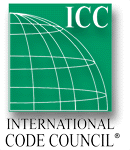

all our products is subject to the standards in ICC International Codes as Guideline


This publication provides information that will aid in the understanding of the referenced standards criteria and provide guidance to standards developers and other users of the International Codes on the application and implementation policy.

Independence for persons with physical and sensory disabilities is a primary goal of the 1998 edition of A117.1 standard. ICC/ANSI A117.1 provides details, dimensions, and specifications to help building designers develop their plans so that the facility will offer unobstructed entry and ease of use to all users with disabilities.
The technical specifications in this standard are intended to create elements and spaces that can be used independently by persons with disabilities. The requirements are based on adult anthropometrics, and may not be appropriate for some applications.
The intent is to serve as wide a spectrum of persons with disabilities as possible based on current available knowledge and experience. Because needs and capabilities vary from individual to individual, it is not possible to set technical criteria that would permit independent use by all persons with disabilities. For example, not everyone is able to transfer from a wheelchair to a water closet, even though the clearances necessary for such a transfer are provided according to this standard. Criteria contained in the standard are based on the best information available for consideration during the revision process. Results of recent research are welcome from all interested and affected parties.
Understanding and consistency in the application of the criteria throughout the country would be of immeasurable value to the person with a disability, as well as building regulators, designers and owners, and the community in general. Consistency would result in a greater level of comfort for a person with a disability in his or her daily activities. A person with a disability would know what to expect within a facility instead of finding new obstacles to overcome in each situation. There are many accessibility features that benefit not only people with disabilities, but provide a tangible benefit to people without disabilities.
The 1961 edition of ANSI Standard A117.1 presented the first criteria for accessibility to be approved as an American National Standard and was the result of research conducted by the University of Illinois under a grant from the Easter Seal Research Foundation. The National Easter Seal Society and the President's Committee on Employment of People with Disabilities became members of the Secretariat and the Standard was reaffirmed in 1971.
In 1974, the U. S. Department of Housing and Urban Development joined the Secretariat and sponsored needed research which resulted in the 1980 edition. After further revision that included a special effort to remove application criteria (scoping requirements), the 1986 edition was published. When requested in 1987, CABO assumed the Secretariat. Central to the intent of the change in the Secretariat was the development of a standard that, when adopted as part of a building code, would be compatable with the building code and its enforcement.
On February 23, 1998 ANSI approved the new 1998 edition of the standard, culminating nearly three years of work by the A117 committee.
¡@
¡@
more information we are referring to the NOMMA standard you can find out more information from web
http://wuarchive.wustl.edu/edu/arts/metal/NOMMA/index.html
¡@